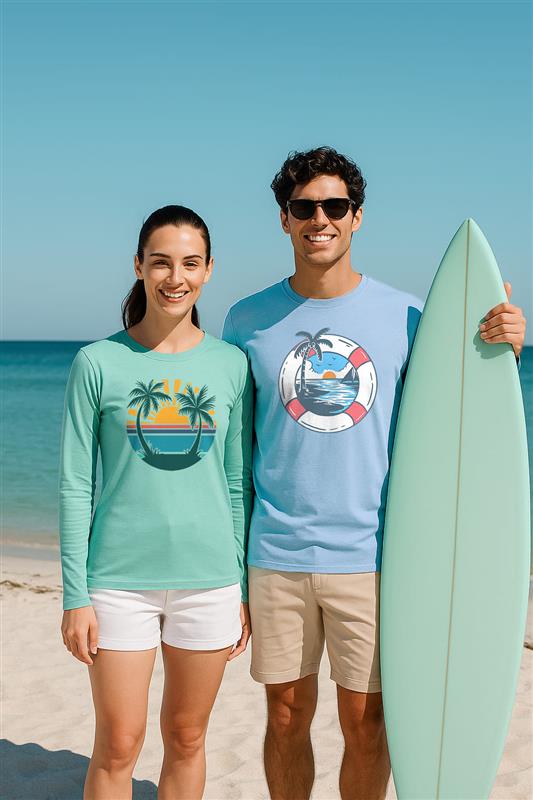What To Wear For A Day Hiking In Any Kind Of Weather

Knowing what to wear for a day hike can truly highlight safety and enjoyment. Using layers, wearing supportive shoes, and adding simple accessories like a hat and sunglasses are simple decisions when one understands the right hiking gear. Choosing clothes becomes easier when you take into consideration the weather, terrain, and how long you'll be outdoors.
If you dress improperly, you can be cold, sunburned, or blistered. Wearing loose, light layers during summer or warm, water-repellent clothing during winter can keep you safe and your hike pleasant. Functional clothing can also keep you safe from plant and insect scratches.
Key Takeaways
-
Wear layers for safety and comfort.
-
Good shoes and accessories will keep you safe while you hike.
-
Always dress your gear according to weather and trail.
How Wearing the Wrong Clothes Can Ruin Your Hike
Wearing inappropriate attire while hiking will make you feel uneasy and even dangerous. Cotton is a damp material and has you soaking in sweat on your body. It will keep you cold even in good weather conditions.
Cold Weather Dangers
-
You might get too cold if you wear light or damp clothing.
-
Hypothermia can occur if your body gets cold too fast.
-
They are aggravated by wind and rain.
Hot Weather Hazards
-
Thick or dark clothing tends to make you feel warmer.
-
You can get sunburned when exposing your skin.
-
This sweating can result in chafing, which hurts.
If your hiking shoes are not proper, your feet will blister or slide. Socks that are too thin won't be cushioning your feet.
Clothing protects you. The right layers and cloth dry you out and warm you up. Always consider the weather and dress first before you start your hike.
Plan Your Outfit Keeping This In Mind
Understanding what to wear for a day hike can help you choose the right apparel to stay comfortable and protected outdoors. Consider the terrain and potential weather conditions before heading out.
Dress For The Trail, Not The Trend
The terrain will make you decide what you should wear. For rocky or steep terrain, wear strong pants and strong shoes with strong traction. Long pants and long sleeves will protect your skin from being scratched, bug bites, or poison ivy if you hike through thick grass or underbrush.
Shorts and light tops are acceptable on good-graveled, flat trails. Cotton is not acceptable if you expect mud or water; it's chilly and will waterlog. Ankle support boots are perfect on trails with lots of rocks or roots. Closed-toe shoes are perfect, particularly if you're walking on sharp rocks or sticks.
Select Clothes That Suit The Weather
The weather may change in a matter of moments, so be prepared. When the sun is out, wear light, light-colored, moisture-wicking fabrics. Wear a brimmed hat and UV-blocking, glare-blocking glasses to protect your skin from sunburn and glare.
Layer on chilly days. Use a moisture-wicking base layer, a mid-layer of warm clothes (like fleece), and a water-resistant outer layer if rain is forecasted. Bring a light rain jacket even on non-rainy days.
Make sure to check the temperature before heading out. On unseasonable days, layer and adjust accordingly.
The 3-Part Clothing System You Never Knew You Needed
The most comfortable trail hiking is achieved by using a three-layer clothing system. Each layer is designed to do something specific: to evaporate sweat, warm you up, or to protect you from wind and rain.
Base Layer Choice
Your body is in contact with the base layer. It simply pulls sweat away from your body. If your base layer is quick-drying, you won't get wet and you won't get cold.
For anything but the longest treks, choose a polyester, nylon, or merino wool base layer. Cotton is a bad choice since it wicks sweat and dries in a geological era. Wet cotton even makes you cold, even on a warm day.
Wear a short- or long-sleeved tee shirt, depending on what the weather demands. In a cold day, a long-sleeved bottom layer is a good way to stay warm. Good options for base layers are:
|
Material |
Dries Rapidly |
Good for Warmth |
Odor Control |
|
Merino Wool |
Yes |
Good |
Good |
|
Polyester |
Yes |
Moderate |
Just |
|
Nylon |
Yes |
Light |
Fair |
|
Cotton |
No |
Poor |
Poor |
Insulation Layer Alternatives
The insulating layer retains your body heat in order to make you warm. This comes in handy during chilly or inappropriate weather.
Sweaters and fleece jackets are popular. They are warm, light, and dry fast. If you're going to be cold or standing still for a lot of time, wear a heavier fleece or a light down jacket.
Synthetic jackets are also effective. They are warm when wet, but cool when wet-through, as opposed to down jackets. A light fleece pullover should be sufficient for cold weather day hikes.
Outer Layer Problems
It insulates you from wind, rain, and snow. A good outer layer should be waterproof and breathable.
A Gore-Tex or equivalent waterproof and breathable membrane jacket will keep you dry without being too sweaty. Get ones with pit zips or vents so you can vent when you want. Some zip up tight enough to easily fit in the pack.
A windbreaker can suffice for windy dry conditions. In the rain, always have a real rain jacket with you. In rain with heavy drops, have light rain pants for the lower extremities.
Some Day Hike Essentials to Pack
When deciding on what to wear for a day hike, bear in mind that the appropriate accessories keep you insulated and covered along the way. Shield your skin from the sun, heat up your hands, and prevent garbage from finding a home in your boots.
Sun Hats And Protection
A good hat keeps the sun out of your face and neck. Wear a wide-brimmed hat for maximum protection, or a cap with a big bill and neck flap. Light colors are light and reflect the sun's rays and cool you.
UV-blocking sunglasses shield your eyes from the sun's damaging effects. Choose wraparound models for added protection. Don't forget the sunscreen. Apply at least SPF 30 and reapply in two hours, and especially if you sweat.
A bandana or a buff will also prove useful. Use it around your neck or drape it over your ears for additional protection against the sun. Both of them provide protection against sunburn and heatstroke.
Gloves And Handwear
Gloves are not just for winter. Lightweight gloves prevent your hands from blistering, scraping, and scratchy plants on rough trails. When you're hiking with poles, gloves prevent your palms from sweating and your grip from slipping.
Wear insulated warm gloves to warm your hands on cold days. Select gloves that are easy to grasp and provide good grip. Touchscreen gloves enable you to access your phone without removing your gloves.
Ankle And Gaiters Protection
Gaiters fit over the upper part of your lower legs and boots. They prevent dirt, sand, stones, and bugs from getting in your shoes and from creating blisters, and keep your feet comfortable.
Short gaiters suffice on regular trails. Tall gaiters are more protective in rough or wet terrain, such as streams or heavy cover. Use water-resistant or waterproof gaiters in rain, mud, or snow.
Some mesh gaiters are comfortable on warm summer days, while others are dense and heavy enough to push through thorny or rocky terrain. Pull the gaiters snug to fit tight but not too tight, and clip them closed so they do not open on a hike.
Some Weather-Specific Hiking Equipment
Proper weather attire will protect you and keep you comfortable on the trail. You will have to prepare yourself for unpredictable weather, insulate your body, and control your body temperature.
Hot Weather Equipment
-
Wear loose, light-colored tops and bottoms of fast-drying materials such as polyester or nylon. These will pull sweat away from your skin and dry three to four times faster than cotton.
-
Wear a wide-brimmed hat and UV-sunscreen sunglasses to shield yourself from the sun. You may also use a bandana or neck gaiter to cover your neck.
-
Wear a light, long-sleeved shirt for additional protection from the sun. Wear long pants to keep bugs away and to avoid scratches from plants. Apply sunscreen to exposed skin, and bring a supply to reapply on your hike.
Cold Climate Clothing
-
Dress in layers to keep warm and change when your body gets hot or loses heat. Begin with a moisture-wicking underwear, a wool or synthetic shirt. Include an insulating layer such as fleece or lightweight puffy jacket.
-
Cap it off with a waterproof and windproof outer cover. Cotton will soak up the water and get you chilly, so do not use that.
-
Wear a warm hat, gloves, and thermal socks. Insulated boots will warm and dry your feet. Pack extra layers in your backpack, a spare pair of socks and gloves.
-
Add hand warmers if it is predicted to be freezing. In extremely cold or very windy weather, also wear a balaclava or neck gaiter to cover your face.
Rain And Wind Cover
-
Choose a water-repellent, breathable jacket that will fit your torso. Choose taped seams and adjustable hoods to exclude rain and wind. Rain pants are so light they will dry your legs.
-
Wear quick drying clothing under the rain gear. These will never be sticky nor heavy when you get wet.
-
Wear a wide-brimmed rain hat, or use the hood of your jacket with the brim in front. Waterproof walking shoes keep feet dry, especially if on wet or muddy ground.
Clothing Tips For Different Weather Conditions
Comfort begins with knowing what to wear for a day hike. Dressing in layers lets you adjust your outfit as the weather changes along the trail.
Tropical Weather
-
Wear a lightweight, moisture-wicking top.
-
Choose light-weight shorts or trousers.
-
Include a hat and sunglasses for sun protection.
Cold Weather
-
Begin with a thermal base layer.
-
Wear an insulated or fleece jacket that is warm.
-
Wear a outer windproof and waterproof layer.
-
Don't miss gloves and a beanie.
Rain or Adverse Weather
-
Carry a waterproof coat that is hooded.
-
Wear light, quick-drying shirts and pants.
-
Where practicable, use waterproof boots and gaiters to repel water.
Get Ready With The Top Hiking Wear From Our Collection
Bring some excitement to your hikes with our essentials. Every piece is crafted for real adventure and keeps you warm, secure, and prepared for whatever the trail has in store for you. Don't go out on the trails without!
Lightweight Moisture-Wicking Hiking Shirt
Our Lightweight Moisture-Wicking Hiking Shirt is cool, dry, and comfortable all day. It is soft, quick-drying, and makes you able to hike longer without getting wet or heavy.
Light Fleece Jacket
Stay warm without feeling heavy. Our Lightweight Fleece Jacket traps heat feels soft, and moves with you, making it perfect for chilly mornings, windy trails, and layering in any weather.
Waterproof Hiking Jacket, Packable
Don't let rain dampen your spirits. Our Packable Waterproof Hiking Jacket keeps you dry, windproof, and stows away in your backpack—ready when the weather turns.
Frequently Asked Questions
What Does A Woman's Closet Need For A Day Hike?
Wear a wicking top to keep sweat from touching your skin. Wear hiking shorts or pants according to the weather. Wear a light jacket or fleece if you get cold. Sunglasses and a wide-brimmed hat are the absolute minimum for sun protection. In case of rain in the forecast, bring a rain jacket.
How Do Males Dress Sufficiently For A Day Hike?
You have prepared what to wear on the day hike that will keep you comfortable and prepared. Choose a drying shirt and hiking shorts or pants suitable for hiking. Wear durable hiking boots or hiking shoes. Cover up with a fleece or windbreaker if it is chilly. Wear a hat and sunglasses to protect from the sun. Carry a waterproof jacket with you in your bag.
Can You Recommend Appropriate Hiking Wear For The Summer Season?
Wear a light-colored short-sleeved t-shirt and sweat-wicking shorts. Keep your skin shaded using a hat, sunglasses, and sunscreen. You can pick light-weight socks and ventilated hiking boots. Pack a light-weight windbreaker for cold gusts or unexpected rain.
What Are The Winter Backpacking Clothing Layers To Wear?
Wear a thermal undershirt to warm you up. For added warmth, include a layer of insulation, such as a fleece or down jacket. Wear a windproof and waterproof outer jacket to prevent cold air and snow from entering. Wear warm socks, gloves, and a hat to warm your hands and head. Wear waterproof shoes for traction and dryness.



